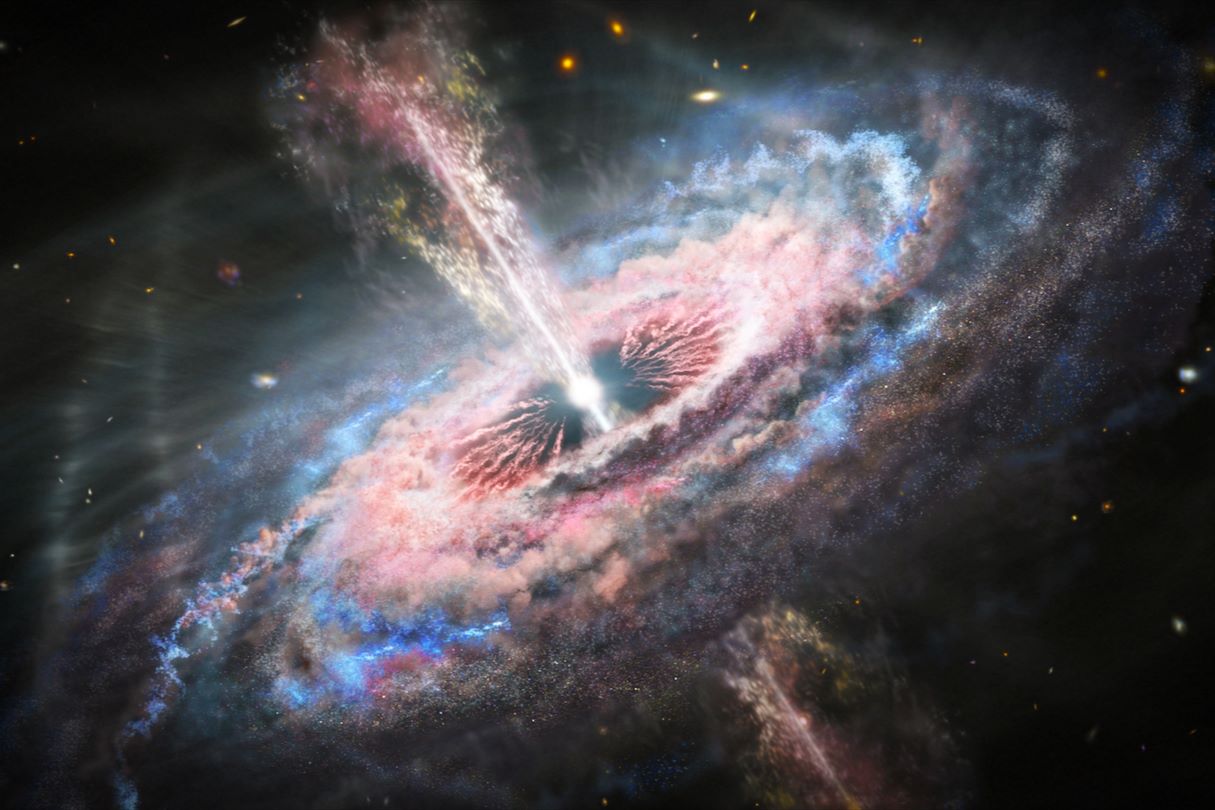
Have you ever looked up at the night sky and wondered about the mysteries of the universe? From black holes to supernovas, the cosmos is filled with phenomena that boggle the mind. Did you know that black holes aren't actually holes but incredibly dense objects with gravity so strong that not even light can escape? Or that supernovas, the explosive deaths of stars, can outshine entire galaxies for a short time? These cosmic events not only shape the universe but also help scientists understand the fundamental laws of physics. Whether you're a budding astronomer or just curious, these 40 facts about cosmic phenomena will leave you starstruck.
Key Takeaways:
- Black holes are mysterious regions in space with intense gravity that not even light can escape from. They come in different sizes, with supermassive ones found at the centers of galaxies like our Milky Way.
- Nebulae are beautiful clouds of gas and dust where stars are born. They come in various shapes and colors, with some, like the Orion Nebula, visible to the naked eye.
The Mysteries of Black Holes
Black holes are some of the most fascinating and mysterious objects in the universe. They have captivated scientists and the public alike with their strange properties and immense power.
- Black holes are regions in space where gravity is so strong that nothing, not even light, can escape from them.
- The boundary around a black hole beyond which nothing can escape is called the event horizon.
- Supermassive black holes are found at the centers of most galaxies, including our Milky Way.
- Stellar black holes form when massive stars collapse at the end of their life cycles.
- The largest black hole discovered so far is TON 618, with a mass 66 billion times that of the Sun.
The Wonders of Nebulae
Nebulae are vast clouds of gas and dust in space, often serving as the birthplaces of stars. They come in various shapes and colors, making them some of the most beautiful objects in the cosmos.
- The Orion Nebula is one of the brightest nebulae and is visible to the naked eye in the constellation Orion.
- Planetary nebulae are formed when a star expels its outer layers at the end of its life.
- The Crab Nebula is the remnant of a supernova explosion observed by Chinese astronomers in 1054 AD.
- Emission nebulae glow brightly because their gas is ionized by nearby stars.
- Reflection nebulae do not emit their own light but reflect the light of nearby stars.
The Enigma of Dark Matter and Dark Energy
Dark matter and dark energy are two of the biggest mysteries in modern astrophysics. They make up most of the universe, yet we know very little about them.
- Dark matter makes up about 27% of the universe's mass and energy.
- Dark energy is thought to be responsible for the accelerated expansion of the universe and makes up about 68% of the universe.
- Unlike normal matter, dark matter does not emit, absorb, or reflect light, making it invisible and detectable only through its gravitational effects.
- Dark energy was first proposed in 1998 when astronomers observed that the universe's expansion was accelerating.
- The exact nature of dark matter and dark energy remains one of the biggest unsolved problems in physics.
The Phenomenon of Supernovae
Supernovae are powerful and luminous explosions that occur at the end of a star's life cycle. They play a crucial role in the universe by distributing elements into space.
- A supernova can outshine an entire galaxy for a short period.
- Type Ia supernovae occur in binary systems where a white dwarf star accretes matter from its companion star until it reaches a critical mass and explodes.
- Type II supernovae result from the gravitational collapse of a massive star's core.
- The elements heavier than iron in the universe are primarily formed in supernova explosions.
- The remnants of supernovae can form neutron stars or black holes.
The Beauty of Galaxies
Galaxies are vast systems of stars, gas, dust, and dark matter bound together by gravity. They come in various shapes and sizes, each with unique characteristics.
- The Milky Way is a barred spiral galaxy containing over 100 billion stars.
- Andromeda Galaxy is the closest spiral galaxy to the Milky Way and is on a collision course with it.
- Elliptical galaxies are more rounded and contain older stars with less gas and dust.
- Irregular galaxies lack a defined shape and often result from galactic collisions or interactions.
- The largest known galaxy is IC 1101, which is about 6 million light-years in diameter.
The Intrigue of Exoplanets
Exoplanets are planets that orbit stars outside our solar system. The study of these distant worlds has revealed a surprising diversity of planetary systems.
- The first exoplanet was discovered in 1992 orbiting a pulsar.
- Hot Jupiters are gas giants that orbit very close to their stars, resulting in extremely high temperatures.
- The Kepler Space Telescope has discovered over 2,600 exoplanets since its launch in 2009.
- Super-Earths are exoplanets with masses between that of Earth and Neptune.
- The TRAPPIST-1 system contains seven Earth-sized planets, three of which are in the habitable zone where liquid water could exist.
The Marvel of Cosmic Microwave Background Radiation
The cosmic microwave background (CMB) radiation is the afterglow of the Big Bang and provides a snapshot of the early universe.
- The CMB was discovered in 1965 by Arno Penzias and Robert Wilson.
- The CMB is a nearly uniform background of microwave radiation that fills the universe.
- Tiny fluctuations in the CMB provide clues about the early universe's structure and composition.
- The CMB is considered one of the strongest pieces of evidence for the Big Bang theory.
- The temperature of the CMB is about 2.7 Kelvin, just above absolute zero.
The Fascination with Pulsars and Quasars
Pulsars and quasars are some of the most extreme and energetic objects in the universe. They provide valuable insights into the behavior of matter and energy under extreme conditions.
- Pulsars are highly magnetized, rotating neutron stars that emit beams of electromagnetic radiation.
- The first pulsar was discovered in 1967 by Jocelyn Bell Burnell.
- Quasars are extremely luminous active galactic nuclei powered by supermassive black holes.
- The most distant quasar discovered is 13 billion light-years away, providing a glimpse into the early universe.
- Pulsars can be used as cosmic lighthouses to study the interstellar medium and test theories of gravity.
The Wonders of the Cosmos
The cosmos holds endless mysteries and wonders. From black holes to supernovas, each phenomenon offers a glimpse into the universe's complexity. Understanding these cosmic events not only satisfies our curiosity but also helps us grasp our place in the vast expanse of space. Astronomers and scientists continue to make remarkable discoveries, pushing the boundaries of what we know. As we look up at the night sky, remember that every star, planet, and galaxy has a story to tell. Keep exploring, keep questioning, and let the wonders of the cosmos inspire you. The universe is a treasure trove of knowledge waiting to be uncovered. So next time you gaze at the stars, think about the incredible phenomena happening light-years away. The cosmos is a testament to the beauty and mystery of the universe.
Frequently Asked Questions
Was this page helpful?
Our commitment to delivering trustworthy and engaging content is at the heart of what we do. Each fact on our site is contributed by real users like you, bringing a wealth of diverse insights and information. To ensure the highest standards of accuracy and reliability, our dedicated editors meticulously review each submission. This process guarantees that the facts we share are not only fascinating but also credible. Trust in our commitment to quality and authenticity as you explore and learn with us.


